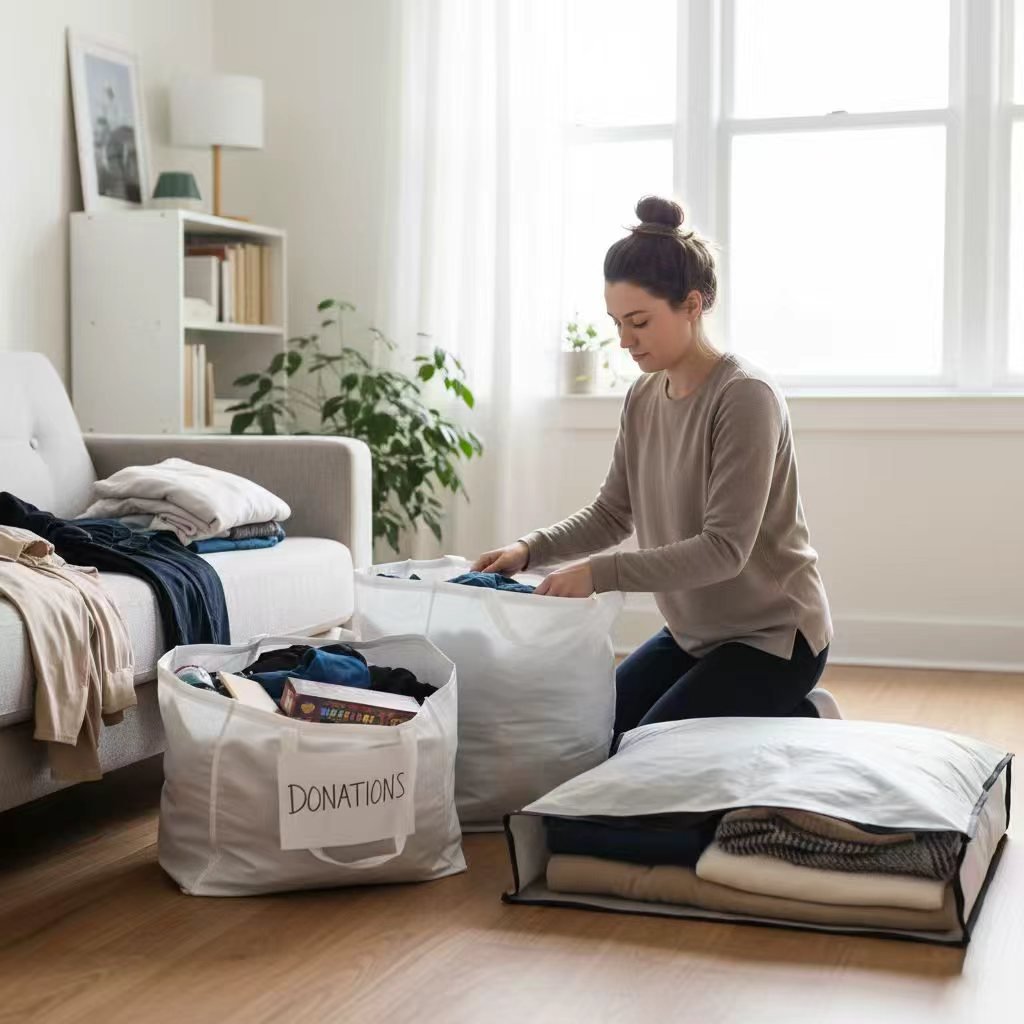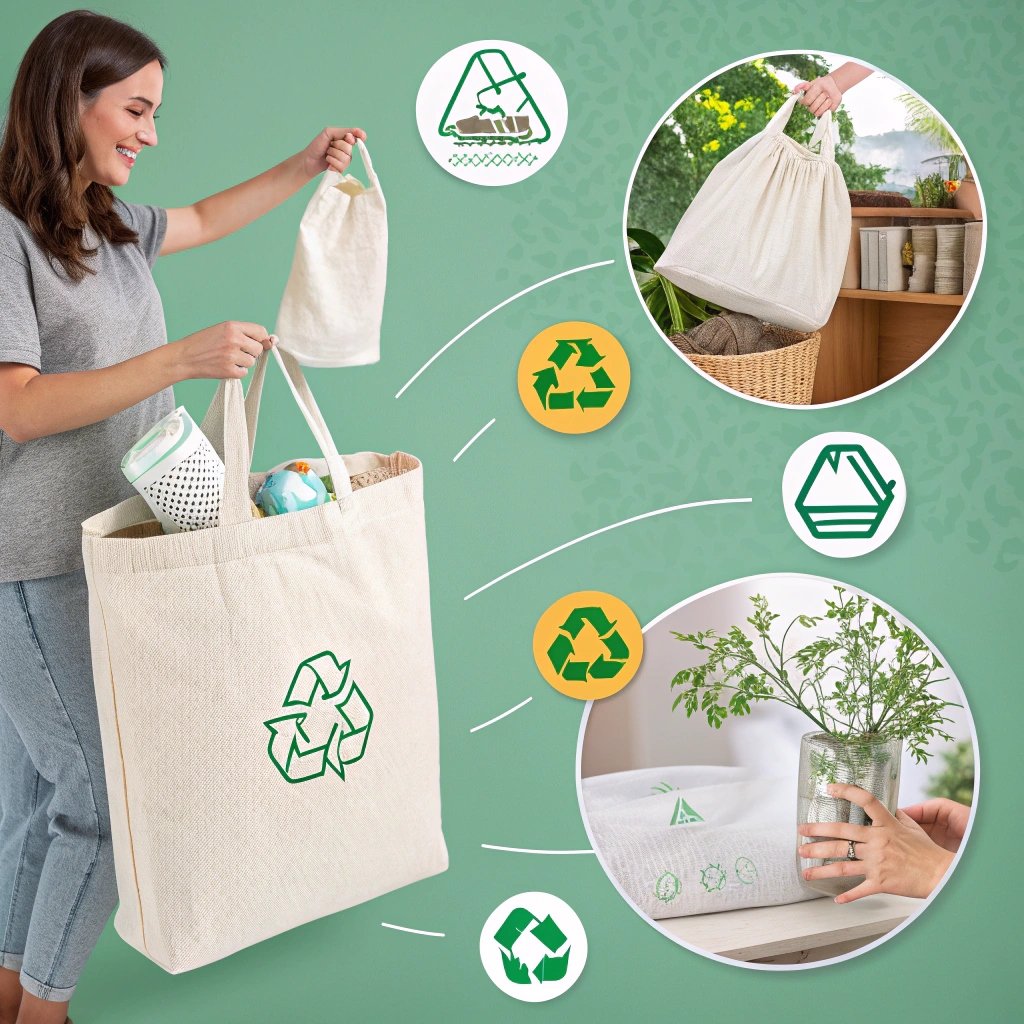
A recyclable bag is designed for reuse or to be recycled after its useful life. But how exactly does it work, and what makes it different from other bags? Let’s explore the material, features, and impact of recyclable bags on the environment.
Recyclable bags1 are made from materials that can be reused or processed into new products, contributing to waste reduction.
If you're curious about recyclable bags, how to register them, or where to drop them off, keep reading for all the essential information.
What Is a Recyclable Bag?
A recyclable bag is a type of bag made from materials that are recyclable after use, helping reduce the amount of waste that ends up in landfills. These bags are often made from plastics such as polyethylene or more sustainable materials like cotton, RPET (recycled PET), and bioplastics.
The process of recycling recyclable bags involves taking them to a recycling facility, where they can be cleaned, shredded, and turned into new products. These bags can be used for grocery shopping, carrying items, and even storing materials, and they are often designed to be durable enough for repeated use.
Recyclable bags1 are designed for reuse or to be processed into new products, helping reduce environmental waste.
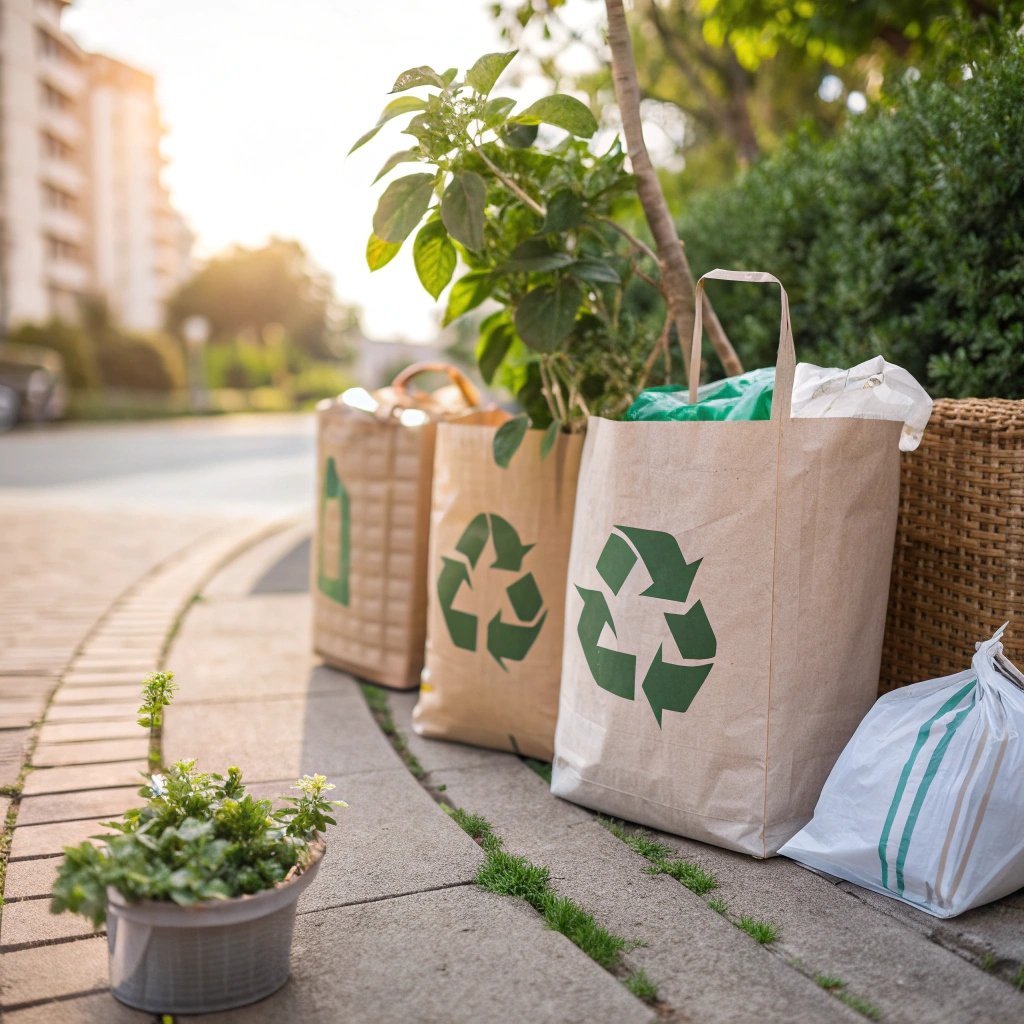
Types of Recyclable Bags
- Plastic Bags (RPET, HDPE): These bags are made from high-density polyethylene (HDPE) or recycled PET, which are widely accepted by recycling centers.
- Cloth or Cotton Bags: These bags are reusable and made from natural fibers, which can be recycled into textiles once they reach the end of their life.
- Biodegradable Bags: Made from plant-based materials like cornstarch or sugarcane, these bags break down more easily in the environment, reducing pollution.
These different types of bags cater to various needs, but all share a common goal of minimizing waste and reducing the environmental footprint.
How to Register a Take Back Bag?
Many cities and recycling organizations offer programs for "take back" bags, where used bags can be returned for proper recycling. If you want to participate in such a program, here's how you can do it:
Registering a take-back bag typically involves joining a local program that facilitates bag return and recycling.
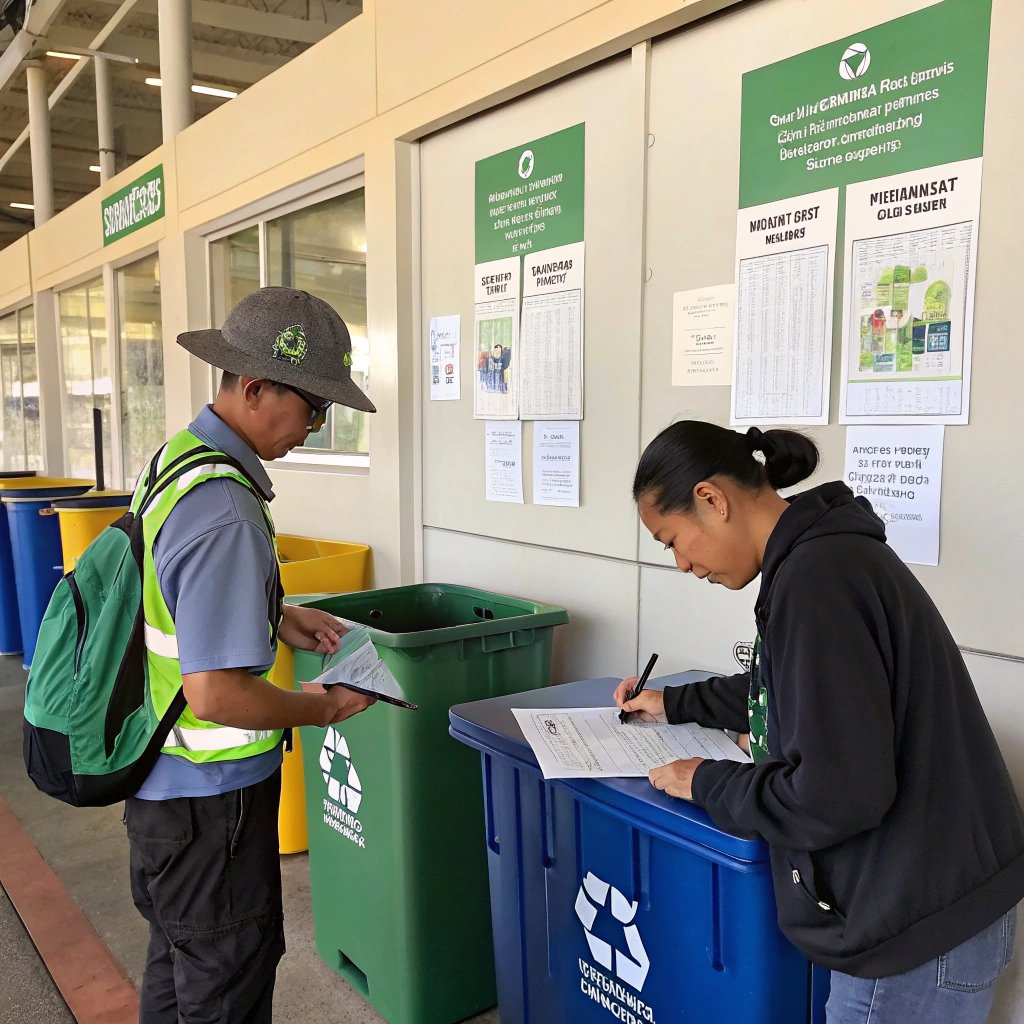
Steps to Register a Take-Back Bag
- Find a Local Program: Many cities have established take-back bag programs. Check your local government website or ask at participating stores or recycling centers.
- Sign Up: Some programs require you to register in advance to receive a designated bag or recycling kit. This could involve filling out a form online or visiting a local recycling center.
- Drop-Off Locations: Look for designated drop-off points such as grocery stores or recycling collection centers, where you can return your used bags for proper recycling.
It's important to check with your local community or recycling center to see if take-back bag programs are available and understand their specific rules for participation.
Should You Put Recyclables in a Plastic Bag?
This is a common question many people ask, especially when trying to reduce waste. While it might seem convenient to bundle recyclables in a plastic bag, doing so could make recycling less efficient.
Plastic bags2 can interfere with recycling processes, so avoid using them to contain recyclable materials.
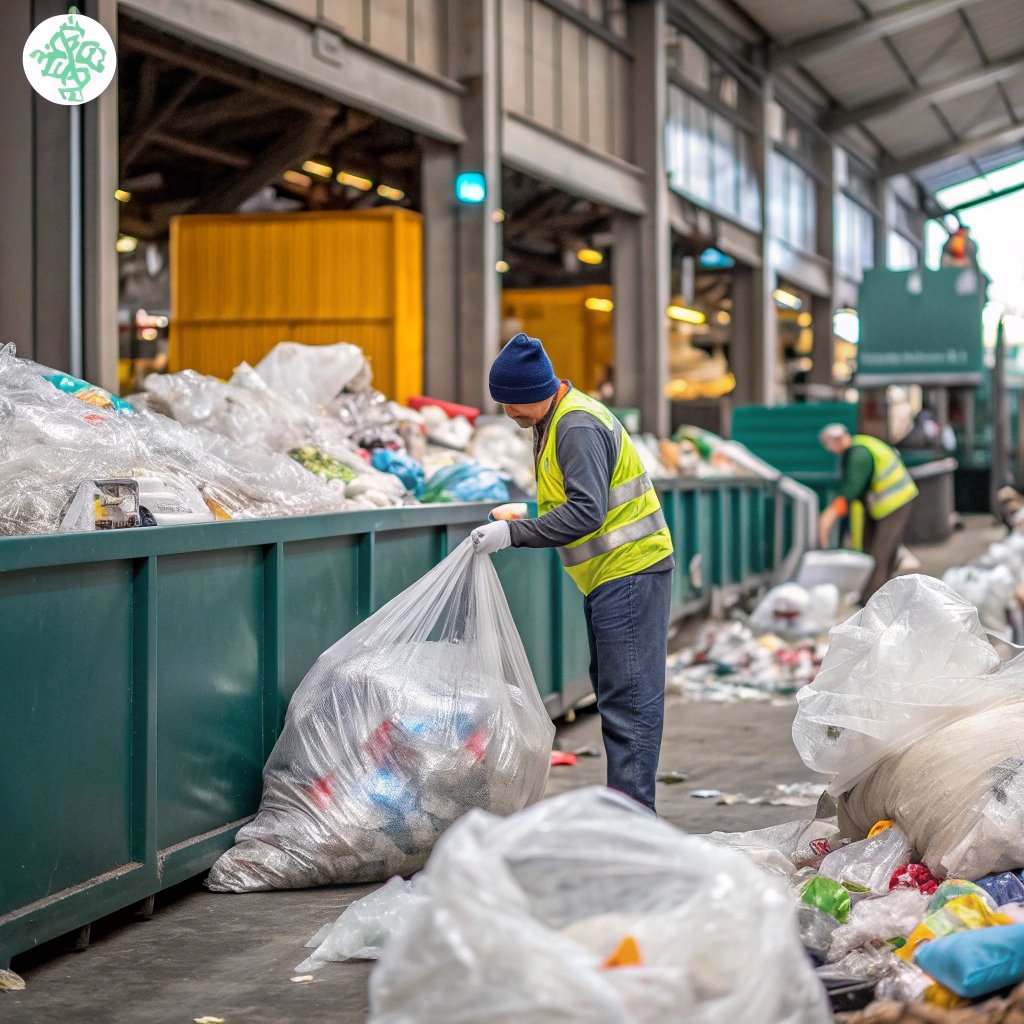
Why Plastic Bags Are a Problem
- Sorting Issues: Most curbside recycling programs use machines to sort recyclables. If items are put into plastic bags, these machines can’t properly identify or separate them. This leads to contamination and waste.
- Contamination: Even if the plastic bag itself is recyclable, it could contain food residue, oils, or other contaminants, making the entire batch non-recyclable. It's best to empty recyclables directly into the recycling bin.
Some recycling programs do accept plastic bags separately, but they need to be handled differently. Many stores have bins for collecting plastic bags for recycling.
Where Can I Drop Off My Trashie Bag?
Trashie bags, typically made of plastic, are a common form of packaging. However, because they often cannot be recycled through standard curbside collection, you need to find specific drop-off locations for them.
Many supermarkets and recycling centers provide drop-off locations for recyclable bags.
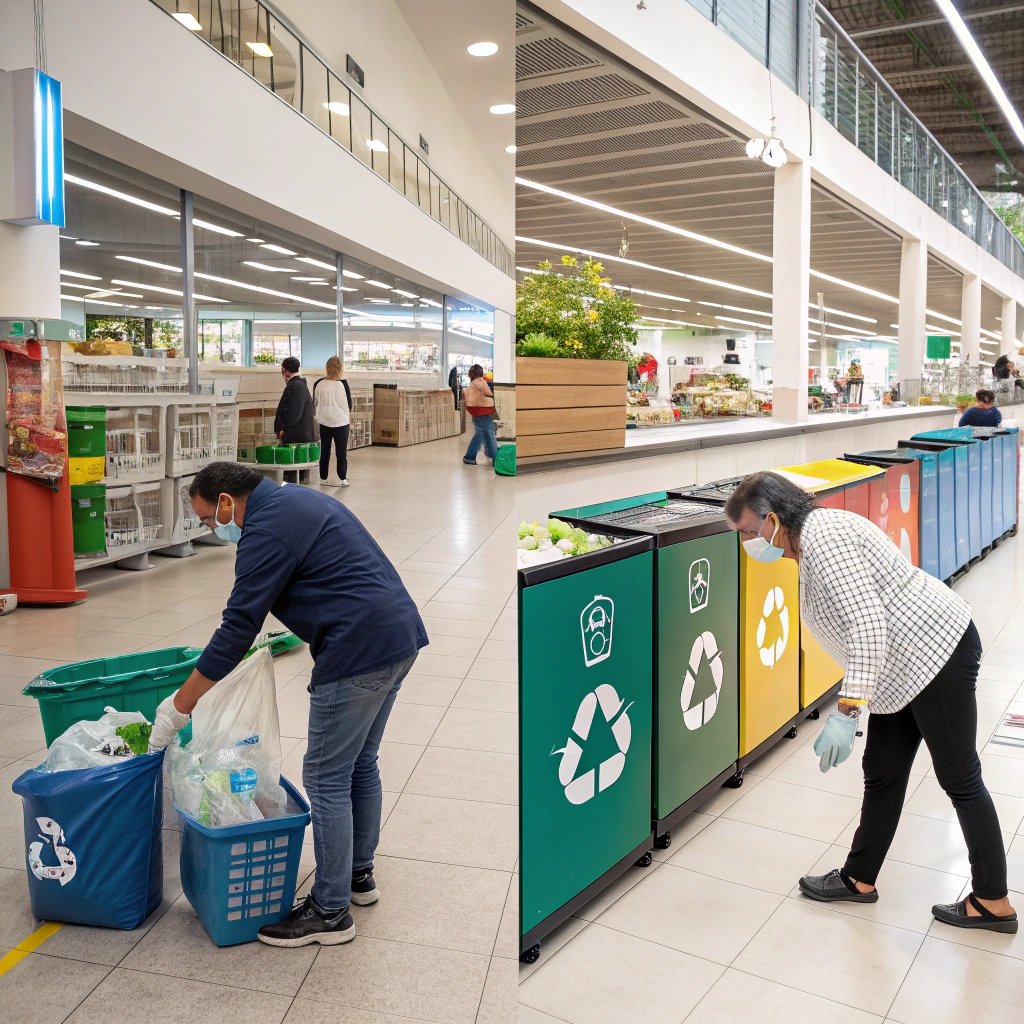
Common Drop-Off Locations
- Supermarkets: Many chain grocery stores have collection bins specifically for plastic bags and other types of packaging that aren’t suitable for regular recycling bins.
- Recycling Centers: Look for specialized recycling centers in your area that accept plastic bags. These centers typically have the infrastructure to handle bags that can’t go into curbside bins.
- Retailers and Stores: Some retailers offer collection points for plastic bags, encouraging customers to return them for recycling instead of throwing them away.
Check with your local community’s recycling program or your nearby stores to find out the most convenient drop-off locations.
How Do I Know if Something Is Recyclable?
Understanding whether an item is recyclable can be confusing, especially when it comes to packaging. Most recycling programs use a set of standard guidelines to determine which items are acceptable.
Look for recycling symbols or local guidelines to determine if an item is recyclable.

General Guidelines for Recycling
- Plastic Materials: Items marked with a recycling symbol and a number (e.g., 1, 2, 5) are generally recyclable. This includes plastic bottles, containers, and jars.
- Paper and Cardboard: Items like newspapers, cardboard boxes, and magazines are recyclable if they are clean and dry.
- Glass and Metal: Both glass containers (like bottles and jars) and metal cans (such as aluminum) are recyclable.
It’s important to remember that while certain materials are recyclable, they must be clean and free from food residue. When in doubt, check your local recycling program for specific guidelines.
Why Are Recycling Bags Not Recyclable?
Some recycling bags, particularly the ones that are not made from the right materials, are not recyclable. These bags might be made from mixed or low-quality plastics that recycling facilities cannot process.
Recycling bags may not be recyclable if they contain non-recyclable materials or are too contaminated.

Reasons Why Some Bags Aren’t Recyclable
- Material Type: Many bags are made from low-density polyethylene (LDPE) or other types of plastic that are not widely accepted by curbside recycling programs.
- Contamination: Bags that are used to store food or non-recyclable items may be contaminated, which renders them unrecyclable. Cleanliness is key when it comes to recycling.
To ensure you’re using recyclable bags, look for bags that have the recycling symbol and check local programs for specifics on what is acceptable.
What Type of Plastic Bag Cannot Be Recycled?
There are several types of plastic bags that cannot be recycled. Plastic bags made from low-density polyethylene (LDPE), for example, are not usually accepted by most curbside programs.
Not all plastic bags are recyclable—especially those made from LDPE or that are overly contaminated.
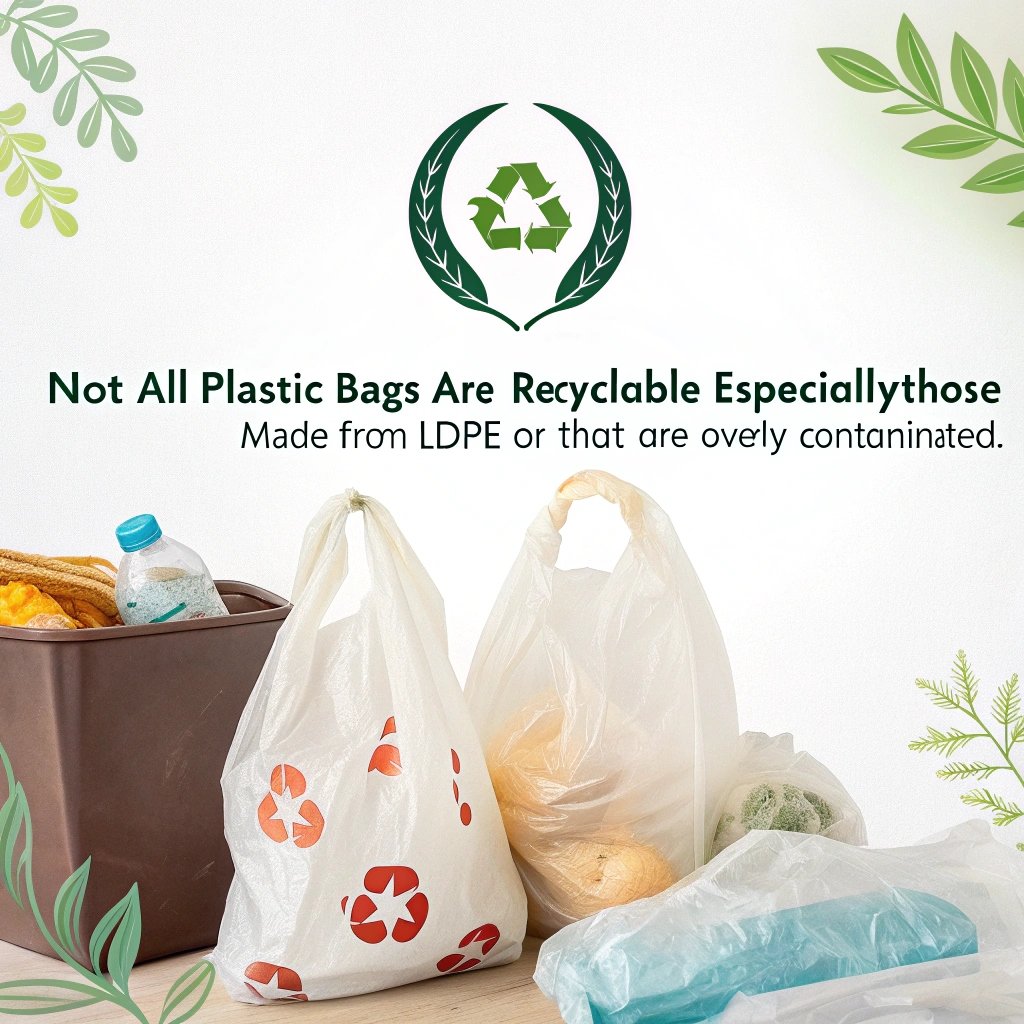
Common Non-Recyclable Plastic Bags
- Shopping Bags: Most single-use plastic shopping bags made of LDPE cannot be recycled in curbside programs.
- Food Bags: Bags used to package bread, produce, or frozen foods often contain food residue and are not accepted by most recycling programs.
- Wraps and Films: Plastic wraps and films often made from mixed materials are difficult to recycle.
While some stores offer plastic bag recycling bins, it’s essential to avoid using these bags for general waste disposal and check if your community offers special recycling for them.
What Is the Difference Between Blue and Clear Recycling Bags?
The color of a recycling bag can often indicate what materials should be placed inside. For example, blue recycling bags are often designated for paper products and some plastics, while clear bags may be used for other materials like glass or aluminum.
Blue recycling bags are typically used for paper and plastics, while clear bags may be designated for certain types of recyclables like glass.
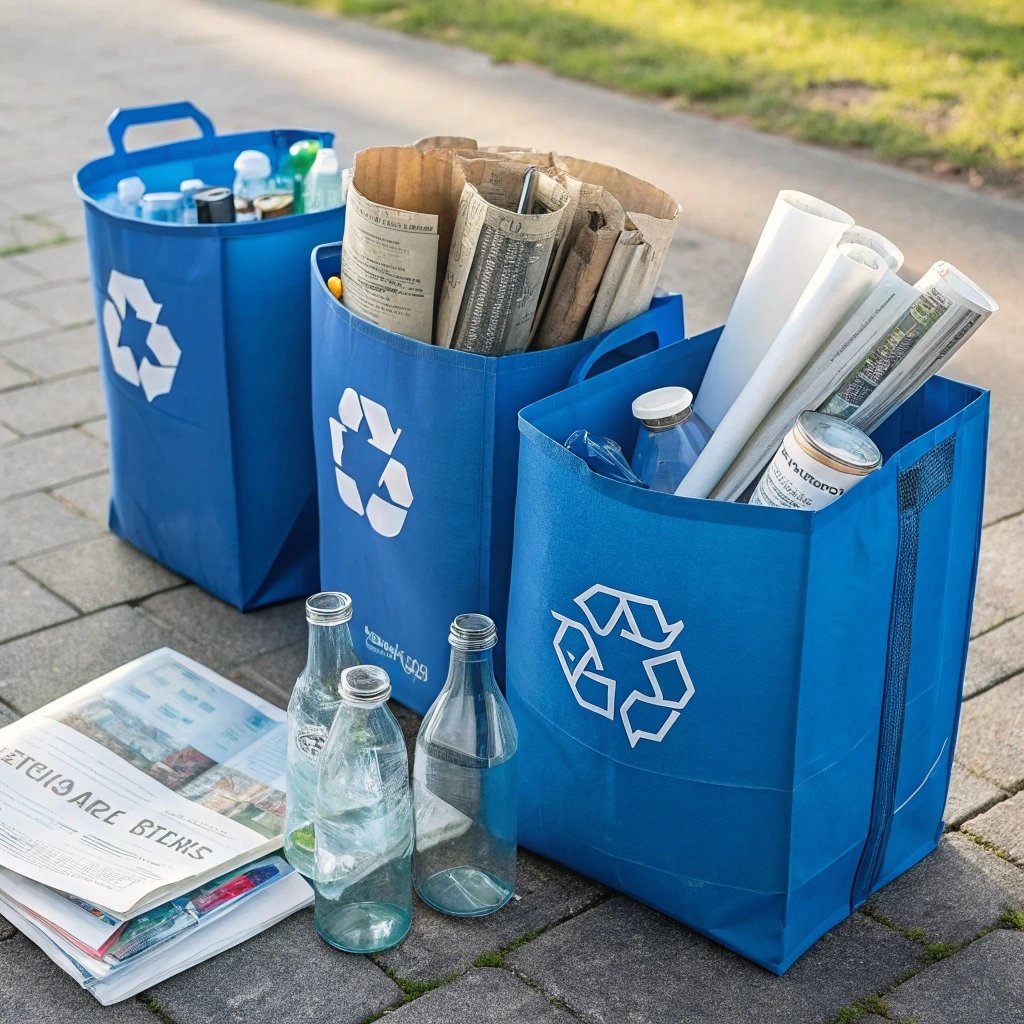
Blue vs. Clear Bags
- Blue Bags: Generally used for paper, plastics, and other recyclables that need to be separated from other waste.
- Clear Bags: May be used for glass, metals, or specific types of materials that require extra sorting.
Check your local recycling program to see if there are specific guidelines on how to use colored recycling bags. This helps ensure that your recyclables are processed efficiently.
What to Recycle and What Not to Recycle?
Knowing what goes into a recycling bag is essential for efficient waste processing. Some items that seem recyclable might actually not be accepted, leading to contamination of the recycling stream.
Only place materials that are clean and properly sorted in your recycling bags for efficient processing.
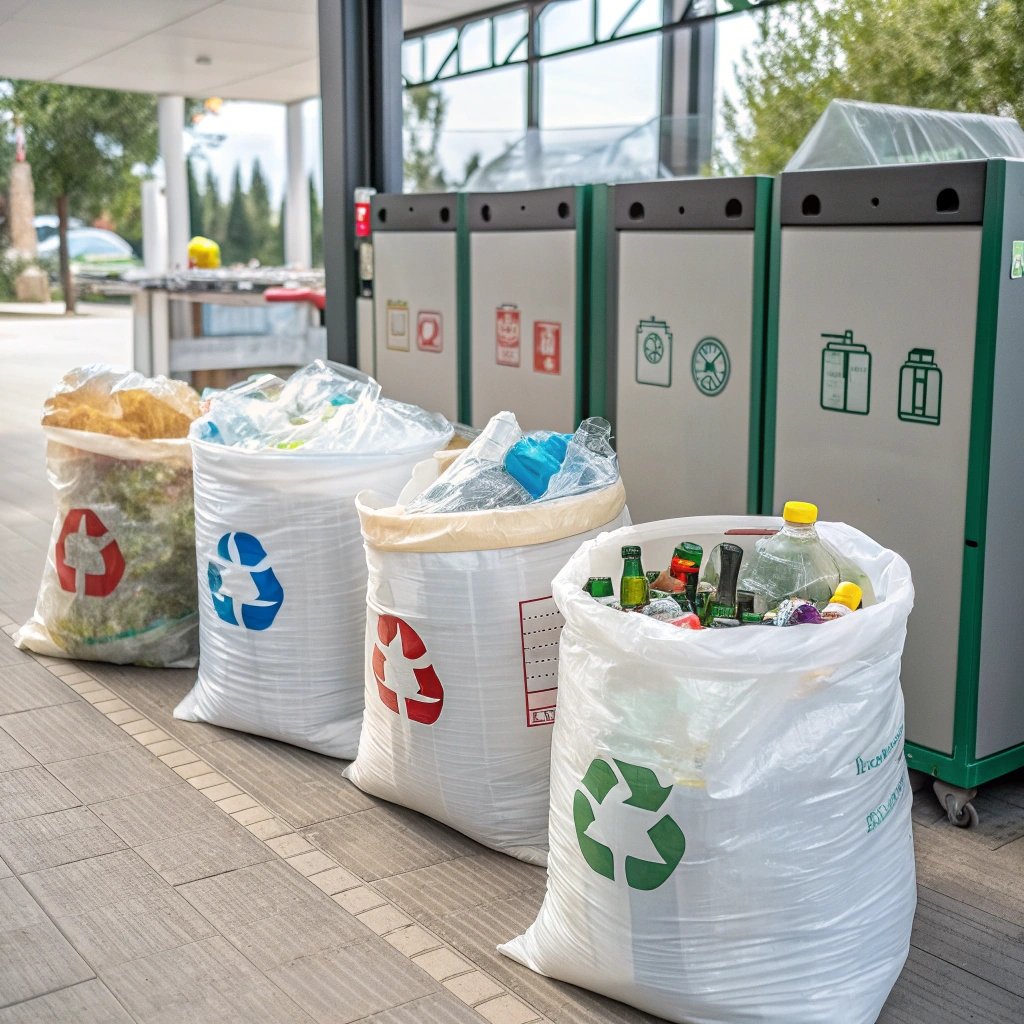
What Goes in Recycling Bags
- Plastic Bottles and Containers (#1, #2, #5): Clean plastic bottles and containers can be recycled easily.
- Paper (Newspapers, Magazines, Cardboard): Clean, dry paper products can be recycled.
- Glass Containers: Jars, bottles, and other glass containers should be placed in the appropriate bag.
Items That Should Not Be Recycled
- Plastic Bags: Most curbside programs do not accept plastic bags because they interfere with sorting equipment.
- Food Waste: Items like food wrappers, greasy pizza boxes, or anything contaminated with food should not be placed in recycling bins.
- Broken Glass or Ceramics: These often cannot be safely recycled due to safety concerns.
Check local recycling guidelines to ensure you are placing the right materials in your bags.
What Goes in a Recycling Bag?
Recycling bags are designed to hold clean, sorted items that are accepted by local programs. This includes paper, plastics, glass, and certain metals. Always ensure your recyclables are clean to avoid contamination.
Only place clean, sorted items in recycling bags for efficient processing.
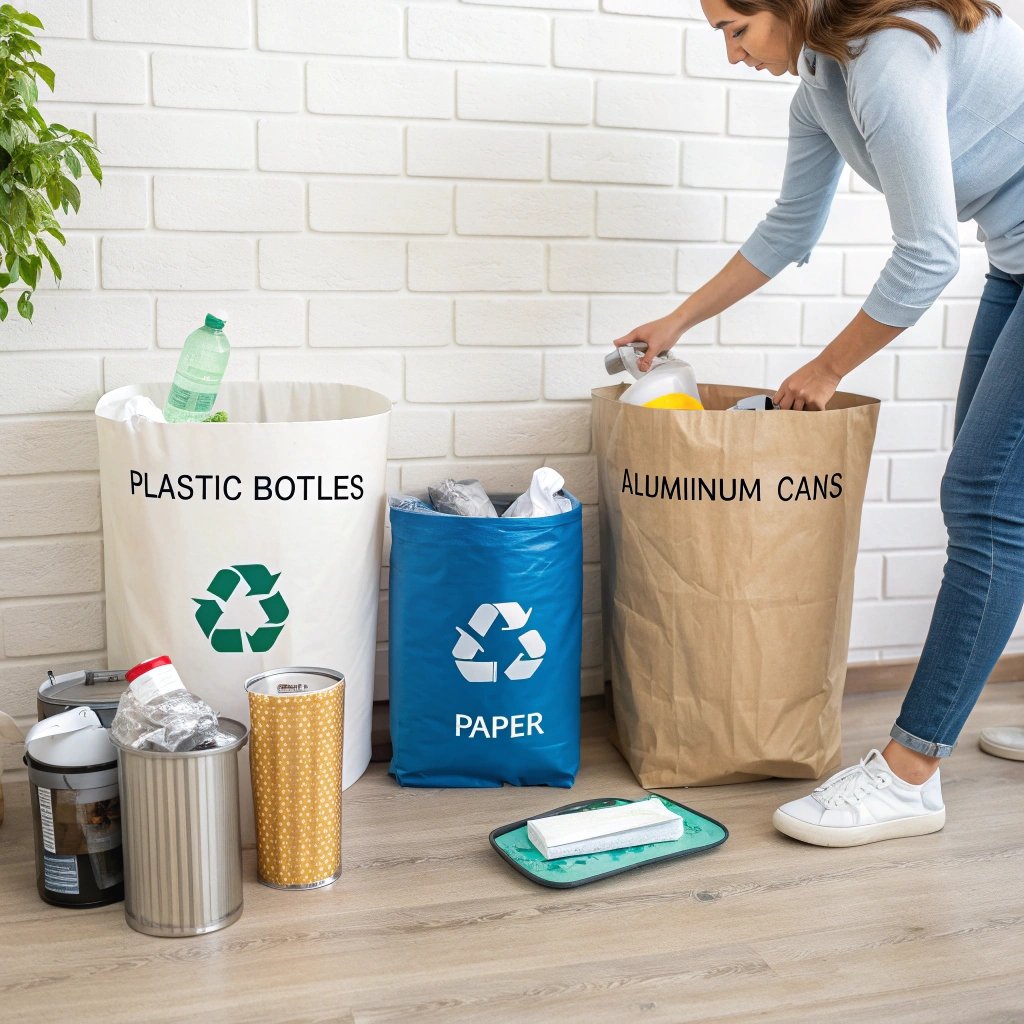
Items for Recycling Bags
- Plastics (#1, #2, #5)
- Paper (newspapers, magazines, cardboard)
- Glass (bottles, jars)
- Aluminum Cans and Steel
Can You Recycle #5 Plastic?
Yes, #5 plastic (polypropylene) can be recycled, but it may require special facilities to process it. Many curbside programs accept #5 plastics, though you should always check local guidelines to be sure.
Polypropylene (#5 plastic) is recyclable, but you may need to check local facilities for acceptance.
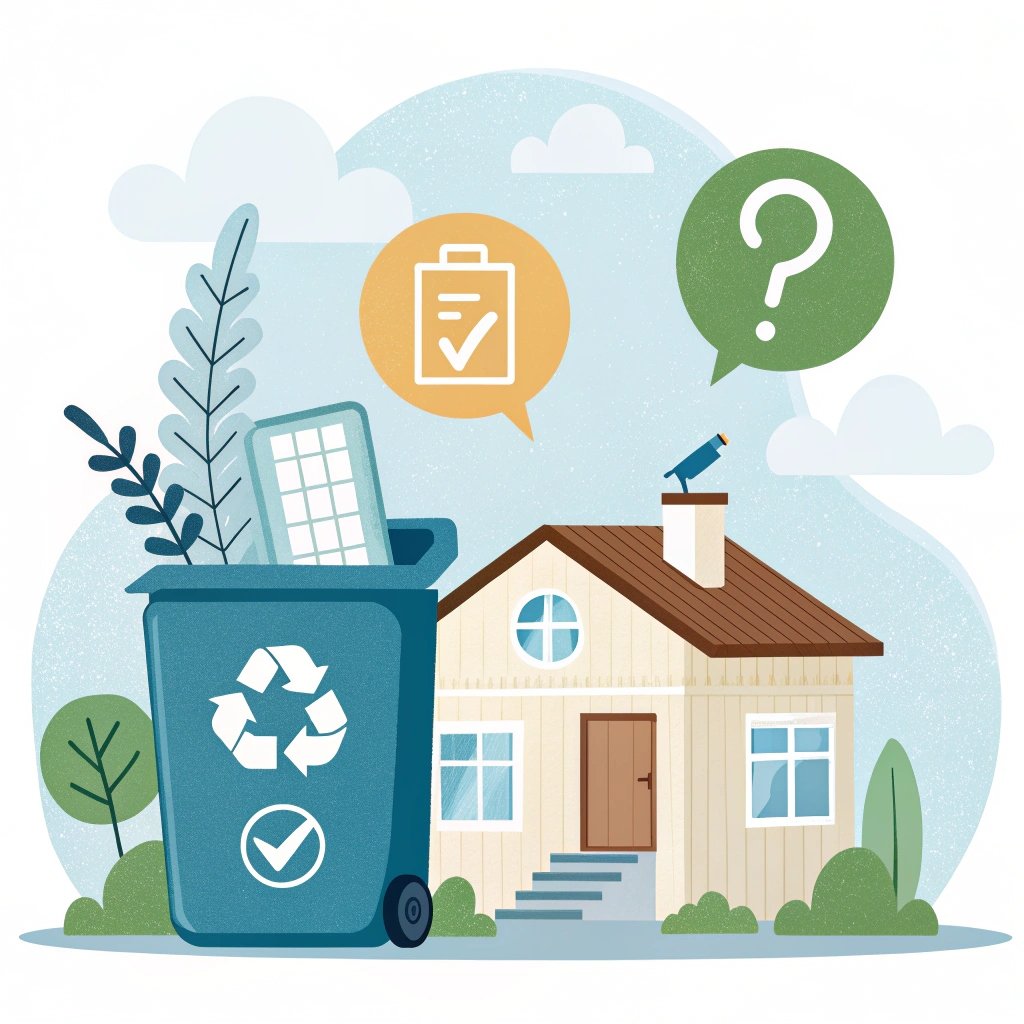
How to Recycle #5 Plastic
- Check Local Guidelines: Not all recycling programs accept #5 plastics, so verify with your local community.
- Special Programs: Some retail locations or recycling centers offer collection bins specifically for #5 plastic items.
What Color Are Recycling Bin Bags?
Recycling bin bags are typically clear or blue, depending on your local recycling program's needs.
Clear or blue recycling bags are the most common colors, used for sorting recyclables.

Why These Colors?
- Clear Bags: Help ensure recyclables can be easily identified and sorted without opening the bag.
- Blue Bags: Often indicate the bag contains mixed recyclables like paper, cardboard, and plastic bottles.
Check your local recycling guidelines for specific colors and sorting instructions.
Conclusion
Recyclable bags are a powerful tool for reducing waste, but it’s essential to understand which materials can be processed and how to use them effectively. By following local guidelines, you can ensure your recyclable bags make a positive impact on the environment.




